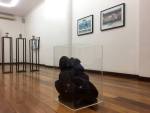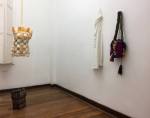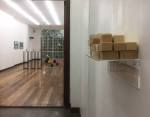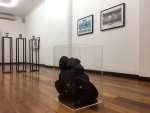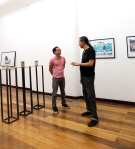
Science Gallery Melbourne’s DISPOSABLE exhibition wrapped up on September 1st after a busy month. The Sewer Soaperie was one of the works in this exhibition. The team sent me lots of photos and feedback. Here is what happened and what we learned from this project:
According to co-curator Dr. Ryan Jefferies in an email to me, the exhibition received 26,504 attendees within the four weeks. The show had 150 kg of recycled fat, 12,000 plastic-eating mealworms, over 500 urine samples, and thousands of river reeds.
Having just moved to Australia, I have learned that post-event surveys are standard procedure here, which is fantastic. Here are quantitative feedback from the audience:
- 92% of visitors were satisfied with the exploration of the theme DISPOSABLE
- 85% think SGM is distinctive to other galleries
- For 79% the program challenged their thinking
- For 86% it sparked conversations they wouldn’t usually have
Dr. Jefferies also wrote that, “DISPOSABLE has also been our most sustainable season, with Science Gallery now following a Sustainability Action Plan, participating in the University of Melbourne’s Green Impact Challenge and significantly reducing our waste.”

The Sewer Soaperie at DISPOSABLE. Image by Science Gallery Melbourne
It was also great to see this piece at the Parliament of Victoria for National Science Week:

The Sewer Soaperie at National Science Week, Parliament of Victoria. Image by Science Gallery Melbourne
I’ve had this work exhibited before, but Science Gallery Melbourne’s team is one of the most exuberant I have ever worked with, and I couldn’t help but feel excited as though this were the first time. It also made those long hours worth it.
More images by Science Gallery Melbourne:

DISPOSABLE by Science Gallery Melbourne. Image by Brent Edwards
Some viewers participated by washing their hands with the soap, though for those who passed, no one blames you.
Images by Brent Edwards
Among the hallmarks of Science Gallery are their mediators, who are there to help their largely young audience to connect with the works. Science Gallery audiences are, from my experience, very curious and ask a lot of excellent questions, which is why I love exhibiting with these guys.

Image by Nicole Cleary for Science Gallery Melbourne
According to Ellie Michaelides, one of Science Gallery Melbourne’s mediators, here are some feedback from the visitors:
“It feels just like normal soap! But less lather”
“I make my own soap at home, I never thought of adding my own left over cooking fat to it!”
“Sewers?! Yeah, nah…”
“Are you sure it’s really clean?”
“That’s really smart, can I buy some?”
“I thought it would smell more”
“It doesn’t smell bad”
“I wish I could buy some”
“I feel like the colour should be less clean”
“I wanted to see what the original fat looks like”
More images by Nicole Cleary:
-

-

-

-

-

-

-

-

-

-

-

-
DISPOSABLE by Science Gallery Melbourne. Image by Brent Edwards
I, too, have learned a lot as an artist who was a part of this. Back in 2016, this project seemed outlandish, almost in the realm of conceptual art. But human impact on the environment and on cities have increased over time, and so The Sewer Soaperie is in its own way now a legitimate design solution. I am happy and fascinated with how well this been received, including how it provoked many people. For me, art can have a confrontational message and propose solutions in addition to other things it can do. I think this is the strength of interdisciplinary art-science work: it can bring about new dimensions and divergent ways of thinking, and as we continue to negotiate our environmental futures, this can be among the ways by which we can transform society.
It was also inspiring to have this piece be exhibited with these amazing projects. There’s also been a lot of media coverage about DISPOSABLE; do check them out:
Thank you to the Science Gallery Melbourne team!

Hurray, SGM team! Image by Brent Edwards







































































